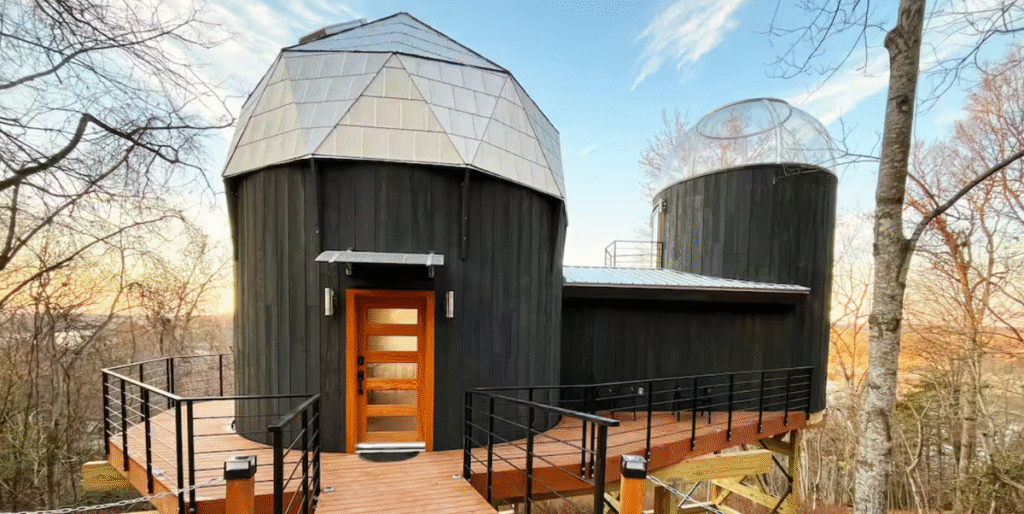Last week, I wrote from a hotel room on the way to a vintage BMW event in Asheville, North Carolina, and tried to cleave the diamond into two parts by writing “Okay, I’m only halfway there and haven’t even begun the trip back, so it’s utterly premature of me to declare victory, so instead I’ll describe the preventive maintenance I did and lay it out against my ‘Big Seven’ things that are likely to strand a car on a road trip so that, when the trip is over and I do the post-mortem and describe the inevitable breakdown and roadside repair, you can all see where I was a big doofus.”
You know what? Nothing broke. Nothing. Zero roadside repairs. No hesitation that got worse and worse and finally forced the car into the breakdown lane indicating fuel starvation. No sudden loss of power indicating ignition failure. No temperature gauge creeping toward the red indicating coolant leakage. No dashboard lights jumping followed by a no-start indicating charging system failure. No shredded belts. No clutch pedal going to the floor. And certainly no broken ball joint causing loss of steering and a grisly accident. In fact, the only things requiring attention were larger-than-expected oil consumption (nearly four quarts during the 2069-mile drive), and a mouse smell I thought I had under control but burst to the foreground when, during heavy rain, the fresh air path through the cowl got soaked, apparently moistening and turbocharging some source of contamination that I’d missed. The smell largely went away when things dried back out. That’s it. That’s all that happened.
I added oil, covered the fresh-air inlet vents with packing tape to stop air flow, which stopped the smell, and pulled it off two days later when the rain stopped. To quote Merlin from the 12th century, “Taping air vents shut doth not qualify as a roadside repair.” I know that you all joke, “Rob only buys these pieces-of-crap cars to generate content.” This was hardly the “I pit my 50 years of wrenching knowledge against the monster that is the FrankenThirty and make it back by the skin of his teeth” adventure you were probably yearning for. I’m genuinely sorry that I have no tales of lying underneath the car on I-81 while tractor-trailers drove within feet of my feet.
Actually I’m not. You naysayers can eat my shorts. The FrankenThirty rocks!!!
Sorry.
But there’s a far bigger story than simply the lack of inconvenient roadside automotive dismemberment or death, and that’s this: I loved driving this somewhat ratty, highly compromised car 2069 miles. And that story has two parts—the part about it being an E30, and the part about it being the FrankenThirty.
The E30 was BMW’s 3 Series car from 1984 through 1991. It wasn’t the successor to the venerable 2002—that was the E21 3 Series, sold in the United States as the then-modern-looking but somewhat anemic 320i that started BMW’s reputation as a yuppie car and used the same M10 four-cylinder engine as the 2002. American enthusiasts were quite unhappy that European markets got the 323i with its small high-revving six-cylinder M20 engine, but for emissions reasons, we didn’t.
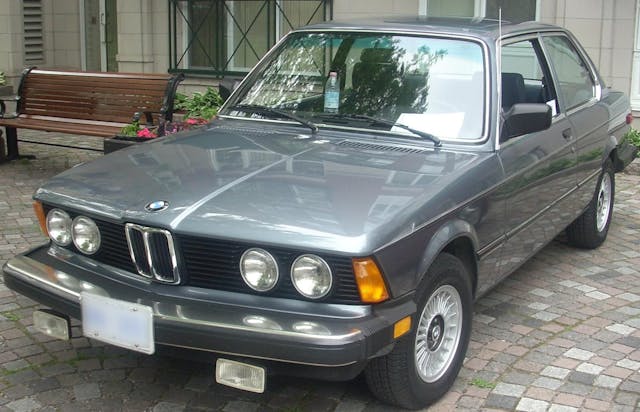
The E21’s successor, the E30 3 Series, came to our shores in late ’83 as the 1984 318i model, with an updated chassis that included rack-and-pinion steering, electronic fuel injection, and dramatically improved climate control. As was the case with the E21, other markets got the high-revving six-cylinder engine while the U.S. initially got only the same 105-hp M10 engine as its predecessor. Enthusiasts felt disrespected and denied a second time.
A six-cylinder E30—the 325e—was introduced to the U.S. later in 1984 (and along with it came four-wheel antilock disc brakes), but its engine was quite a bit different from the high-revving European “i” engine. The “e” was short for Eta, the Greek letter for efficiency. The 2.7-liter Eta engine, also available in the 5 Series 528e, output a lowly 121 horsepower and had a 4800-rpm redline, but it developed 174 lb-ft of torque at just 3250 rpm and was coupled with tall rear-end gearing for fuel-efficient cruising.
When the E30 325i, with its high-revving 2.5-liter 168hp “i” motor, debuted in 1987, American enthusiasts cheered, and the Eta-equipped cars began to be looked at as second-rate goods. They were gone from the lineup by the end of 1988.
All of that is the backdrop for saying that few people today seek out a 325e. I certainly didn’t. Some folks wind up with one because they set out to buy a 325i and then get sticker shock at the $12K–$15K it generally takes to buy a shiny, rust-free one with a nice interior. I, on the other hand, bought a well-priced, basically rust-free 325is that turned out to have an Eta motor in it due to the way the car was rebuilt from a salvage event. The difference wasn’t visible from under the hood, however, and I wasn’t enough of an E30 expert to know or even suspect.

But the “e” or “i” thing notwithstanding for a moment, the E30 3 Series BMW is wildly popular for a good reason. It’s a car about the same size as my beloved early 1970s BMW 2002s, but the E30 is two generations newer. It’s quieter, more stable at high speed, has cruise control, antilock brakes, a climate control system where you can use the A/C to defrost the windshield, and wipers that don’t creep like a slug on sandpaper. I experienced all this on the first day of the drive to The Vintage when we hit 300 miles of serious rain. Let’s face it—road-tripping valuable cars is bliss when you’re on open road under sunny skies, but it can get nightmarish when the weather turns bad and you’re surrounded by trucks. I’ve driven my 1973 BMW E9 3.0CSi down to Asheville four times, and on one trip, we hit 500 miles of nearly unrelenting, drenching rain. The combination of the high value of the rust-prone car, its old-man-with-a-walker-slow wipers, and the lack of ABS made that experience somewhere between stressful and terrifying. In contrast, by the end of the day in the FrankenThirty, I was glad I was driving an E30 and not one of my 2002s or the E9. It was a quieter, more stable-feeling, safer car while still being very much an analog vintage BMW.
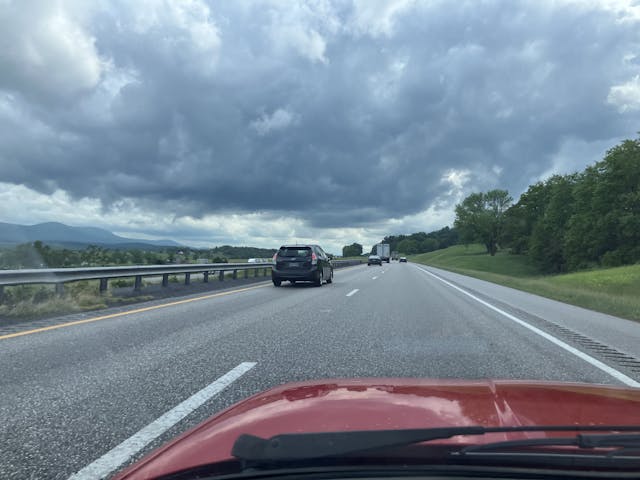
So that’s the general E30 part. Now, the FrankenThirty-specific part. As I’ve said in other pieces, I call my car the FrankenThirty because it’s a 1988 325is whose rebuilt salvage title was apparently achieved by grafting the front third of a 1987 325e—including the Eta engine—onto it. When I discovered this, I was dejected, but friends recommended that I live with the car for a bit because I might find that I actually liked the Eta motor. As it turned out, they were absolutely right. The combination of the Eta engine’s low-rpm torque and the fact that my car still has the shorter 3.73 rear end meant for the “i” motor makes it move out smartly whenever you goose the gas; you don’t need to wait for the motor to wind up.
And that Eta engine, coupled with the car’s shorter-than-usual rear end, had the engine spinning at 3500 rpm at 80 mph (lazy by 2002 standards, which would spin at about 4300 rpm at that speed), but had enough torque that there was no downshifting necessary on any of the hills on the interstates, not even the big ones on I-26 heading in and out of Asheville.
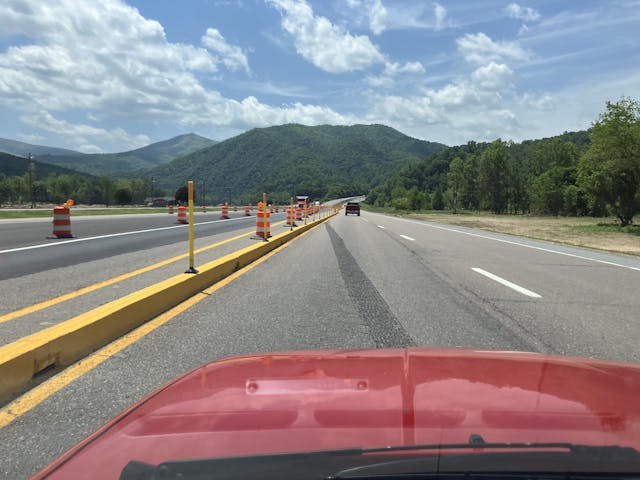
By the time I arrived in Asheville, I was positively gushing about how much I’d enjoyed driving the FrankenThirty. And it wasn’t just that I was driving a car that, because of the whole salvage-title-and-mice thing, I didn’t care if it had gotten damaged. That wasn’t it at all. It was a combination of the car being an E30 that was right-sized and nimble and taut and zippy, yet more stable and safer than a 2002, and this particular E30—my FrankenThirty—having massively exceeded my expectations. I ate breakfast the following morning with a good friend who wrenches professionally mainly on 1970s-era BMWs, and I dumped all this on him. He looked at me quizzically. “You’ve owned E30s before, right?”
“Yes,” I said. “I owned a very nice one about 10 years ago, and had another four back in the day when they were 10-year-old daily drivers with 140,000 miles on them.”
“Then why are you so surprised?” he asked.
I thought about this for a few seconds, and then a light bulb went on that was so big and bright you probably could’ve seen it from space.
“Because I’m just realizing that I’ve never road-tripped one before,” I said, more to myself than to my friend. “When I daily-drove them, it was mainly just around Boston. Maybe my wife and I drove one once down to New York and back. But I certainly never drove one thousands of miles.”
I don’t know that I’m going to become a raving E30 fan boy, or sell off all my 1970s-era BMWs (though I am starting to wonder why I own three 2002s). But I’m surprised that it took me this long to fully get why E30s are so massively popular.
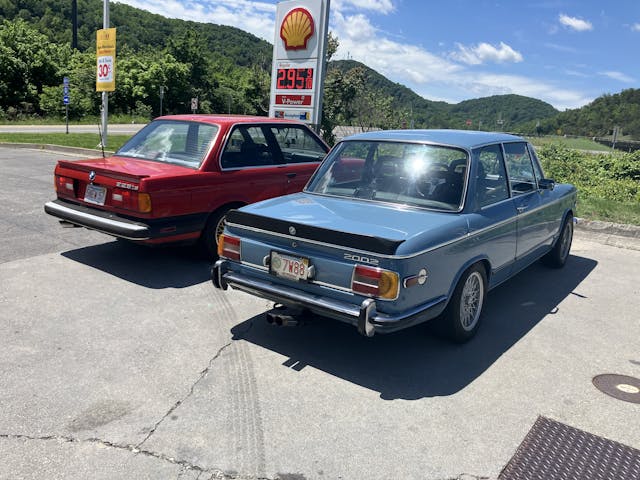
“The Vintage” event itself was wonderful. This was its 21st year, and it’s been held in Asheville since 2016—well, in the little town of Hot Springs, about 75 minutes north into the mountains—but Hot Springs was badly damaged due to Hurricane Helene in 2024. So for 2025, the event was moved to the Hendersonville Airport about 15 miles southeast of Asheville.

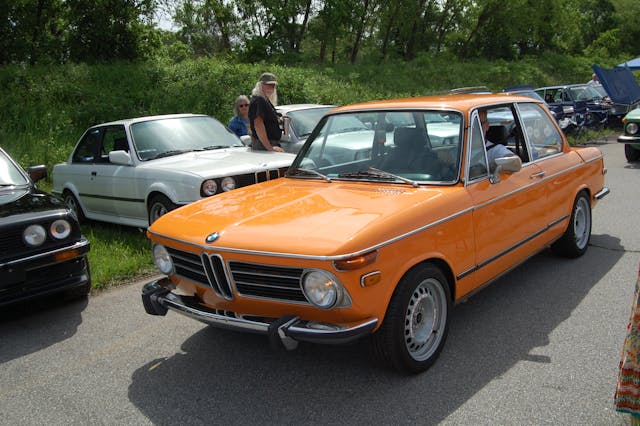

Oh, and all that work I did resurrecting the car’s air conditioning? I didn’t use it nearly as often as I expected. I was certainly glad to have it during the deluge of rain where, with the windows rolled up, it was essential in keeping the windshield de-fogged. And it was nice during one high-80s spike in temperature during a sunny period of driving one day. But most of the trip just wasn’t all that hot. In fact, the last day driving was cold and overcast enough that I admit to cracking on the car’s heat. Still, as we’re now heading into summer, I’m happy it’s working.
You don’t really bond with a car until you road-trip it. I’ve now done that with the FrankenThirty, and I’m glad I did. I loved it, but it’s still too early to say what the car’s future is. After all, I did that with Bertha, the 1975 BMW 2002 track car I sold to a friend in 1991, bought back 26 years later, revived, and drove to The Vintage in 2019. I’ve barely used the car since; it basically sits in rented storage except for keep-it-exercised short drives a few times a year. My heart tells me to give the FrankenThirty whatever it needs—get to the bottom of the mouse smell once and for all, and maybe even swap in the correct engine. But my head tells me that, with the car’s 2/3-of-this-1/3-of-that rebuilt salvage title strangeness, spending a dime more than necessary is just lighting money on fire. And despite my whack-job image, it’s my head that usually rules. After all, my rationality is one of the reasons my darling wife stays married to me (he says, pretending that owning 14 cars is in any way rational).
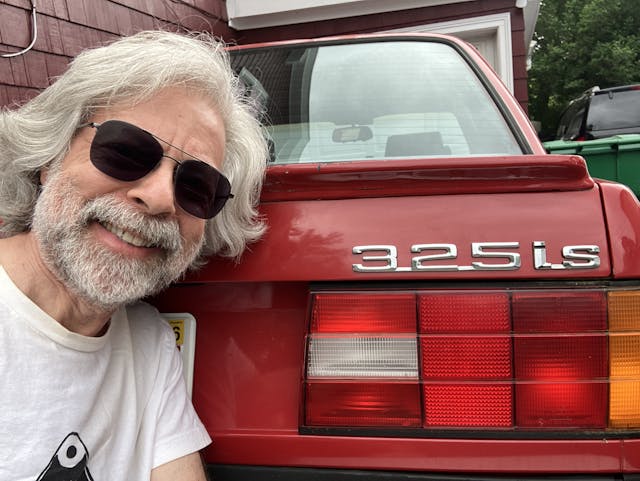
***
Rob’s latest book, The Best Of The Hack Mechanic™: 35 years of hacks, kluges, and assorted automotive mayhem, is available on Amazon here. His other seven books are available here on Amazon, or you can order personally inscribed copies from Rob’s website, www.robsiegel.com.


